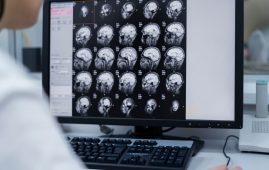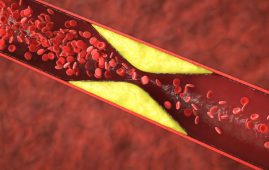

Lung cancer screening with low-dose chest computed tomography (CT) may reveal more than simply lung cancer. According to new research published in CMAJ (Canadian Medical Association Journal), these CTs can detect coronary artery calcium, a high risk factor for coronary artery disease (CAD), in patients without cardiac symptoms.
“Lung cancer screening, although primarily geared towards reducing deaths from lung cancer, also has an opportunity to help tackle the second most common cause of premature death in middle-aged adults, through the identification and risk stratification of coronary atherosclerosis,” writes Dr. Gary Small, University of Ottawa Heart Institute, Ottawa, Ontario, with coauthors.
Coronary artery calcium was discovered in 83% (1232) of the 1486 people screened for lung cancer between March 2017 and November 2018 as part of the Ontario Health Lung Cancer Screening Pilot for People at High Risk, with high levels in 30% (439). More than half of the patients (52% were men), the average age was 66 years, and 68% (1017) were current smokers.
Because lung cancer is the main cause of cancer deaths in Canada, screening programs across the country have implemented low-dose CT for those at risk of lung cancer. These CTs can also easily detect coronary calcification, which is a sign of coronary artery disease, the leading cause of cardiac death.
The success of this pilot program will depend on how clinicians interpret and manage coronary artery calcium readings. However, clinicians must be mindful that there may be negative consequences, such as inappropriate examination following coincidental detection.
“If appropriate therapeutic responses are instituted, lung CT findings could affect survival from 2 leading causes of death: lung cancer and coronary artery disease,” the authors write.
For more information: Caires, M. C., et al. (2024) Prognostic importance of extensive coronary calcium on lung cancer screening chest computed tomography. CMAJ. doi.org/10.1503/cmaj.231602.
more recommended stories
 Healthy Habits Slash Diverticulitis Risk in Half: Clinical Insights
Healthy Habits Slash Diverticulitis Risk in Half: Clinical InsightsHealthy Habits Slash Diverticulitis Risk in.
 Caffeine and SIDS: A New Prevention Theory
Caffeine and SIDS: A New Prevention TheoryFor the first time in decades,.
 Microbial Metabolites Reveal Health Insights
Microbial Metabolites Reveal Health InsightsThe human body is not just.
 Reelin and Cocaine Addiction: A Breakthrough Study
Reelin and Cocaine Addiction: A Breakthrough StudyA groundbreaking study from the University.
 Preeclampsia and Stroke Risk: Long-Term Effects
Preeclampsia and Stroke Risk: Long-Term EffectsPreeclampsia (PE) – a hypertensive disorder.
 Statins and Depression: No Added Benefit
Statins and Depression: No Added BenefitWhat Are Statins Used For? Statins.
 Azithromycin Resistance Rises After Mass Treatment
Azithromycin Resistance Rises After Mass TreatmentMass drug administration (MDA) of azithromycin.
 Generative AI in Health Campaigns: A Game-Changer
Generative AI in Health Campaigns: A Game-ChangerMass media campaigns have long been.
 Molecular Stress in Aging Neurons Explained
Molecular Stress in Aging Neurons ExplainedAs the population ages, scientists are.
 Higher BMI and Hypothyroidism Risk Study
Higher BMI and Hypothyroidism Risk StudyA major longitudinal study from Canada.

Leave a Comment